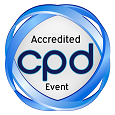
Xianglin Zhai
Louisiana State University, USA
Title: Strategies for bottom-up nanofabrication of organic films using particle lithography with organothiols
Biography
Biography: Xianglin Zhai
Abstract
Combining particle lithography with molecular self-assembly is a practical approach to produce 2D arrays of organothiol nanostructures with well-defined geometries and designated surface coverage. A common feature of the various strategies for particle lithography is that a dried film of monodisperse latex or silica mesospheres is used either as an evaporative mask or structural template to define the periodicity and size of nanopatterns. A close-packed, crystalline arrangement of spherical particles is spontaneously produced when mesospheres are dried on flat surfaces. Thiols attach to gold surfaces forming self-assemble monolayers (SAMs). N-alkanethiol molecules are well ordered as a commensurate (√3×√3)R30° lattice on Au(111) with backbones tilted approximately 30° from surface normal. N-alkanethiol SAMs on flat gold provides highly valuable applicability as two-dimensional (2D) device architectures. Combined with particle lithography, millions of regular nanopatterns are generated within thiol SAM using simple chemistry steps (mixing, centrifuging and drying) with exquisite control of the geometry, density, and surface chemistry at the nanoscale. Surfaces can be designed to present diverse functional groups for spatial selectivity for further steps of chemical reactions. Organized arrays of organothiol nanostructures furnish a scaffold for building more complex molecular structures with additional successive steps of chemical reactions such as click-chemistry or surface-initiated polymerization. Examples will be presented for backfilling organothiol nanopatterns with different thiols and conductive molecules, as steps towards designing surface test platform.

